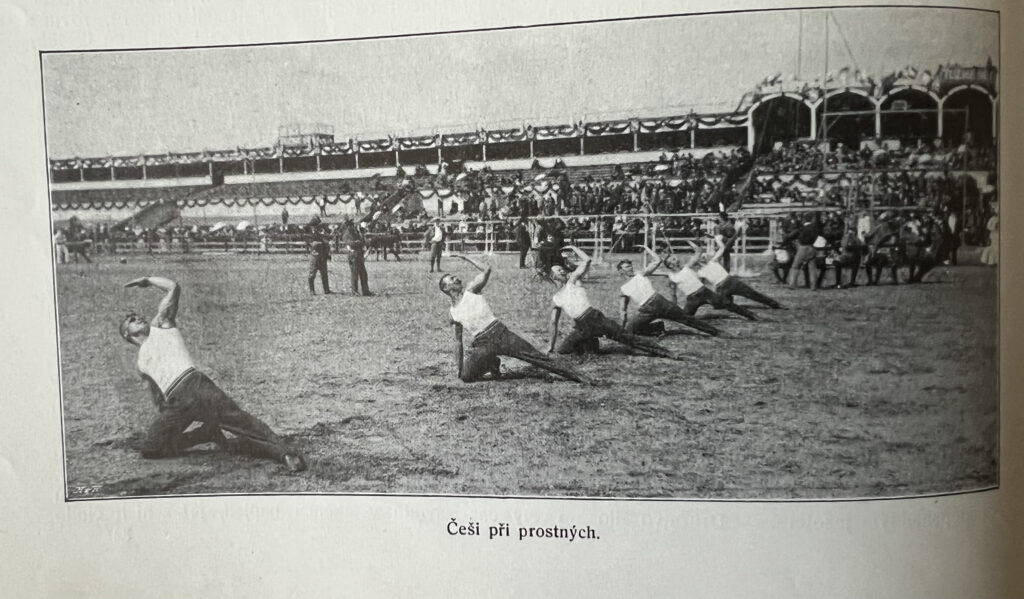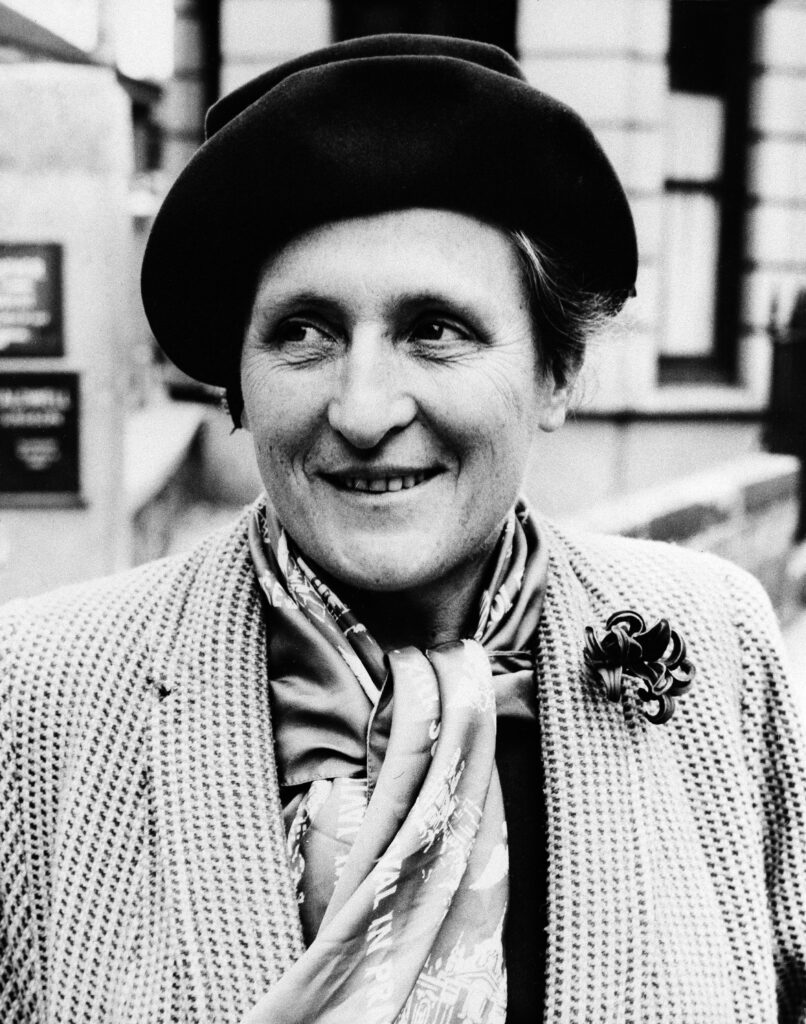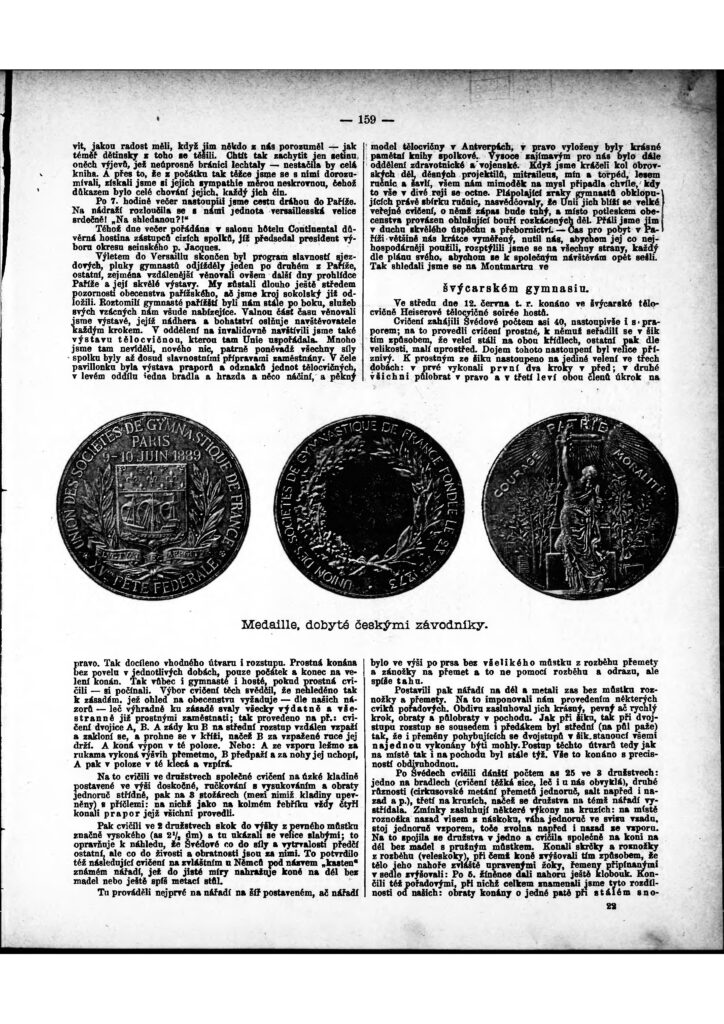Women didn’t compete at the International Tournament in 1907. (They wouldn’t compete at the World Championships until 1934.) But female gymnasts were part of the Fifth Sokol Rally in 1907.
Let’s take a look at their participation.
Women didn’t compete at the International Tournament in 1907. (They wouldn’t compete at the World Championships until 1934.) But female gymnasts were part of the Fifth Sokol Rally in 1907.
Let’s take a look at their participation.
In the official proceedings of the Sokol Rally, the Czechs wrote:
All the professional journals of Europe have written of the fitness of the Czechs, of the understanding in the nation, and today it is certain that we stand first in their eyes and that we have set the direction and pattern for gymnastic endeavors in Europe.
V slet všesokolský 1907: pamětní list vydaný péči
Všecky odborné časopisy evropské psaly o tělocvičné zdatnosti Čechů, o porozumění v národu a dnes je jisto, že v jejich očích stojíme na prvním místě a že jsme udali směr i vzor tělocvičným snahám v Evropě.
But that statement wasn’t exactly true. The German-language press had quite a few negative things to write about the Czech Sokols after the 1907 slet.

It’s no secret that Marie Provazníková of Czecholoslovakia was one of the first known political defectors at an Olympic Games.
However, what has been lost over the years is the context of her defection, particularly the role that gymnastics played in her desire to seek political asylum.
So, let’s take a closer look at her story, starting with the Sokols in the 1940s.

Even before the first modern Olympics in 1896 and even before the first World Championships in 1903, Czech gymnasts had proven themselves to be among the top teams in Europe.
Today, we’ll dive into one competition: the 1889 Fête Fédérale Française de Gymnastique (French Federal Festival of Gymnastics) in Paris.
This competition became a source of pride for the Czech and Slovak Sokols in the twentieth century.
